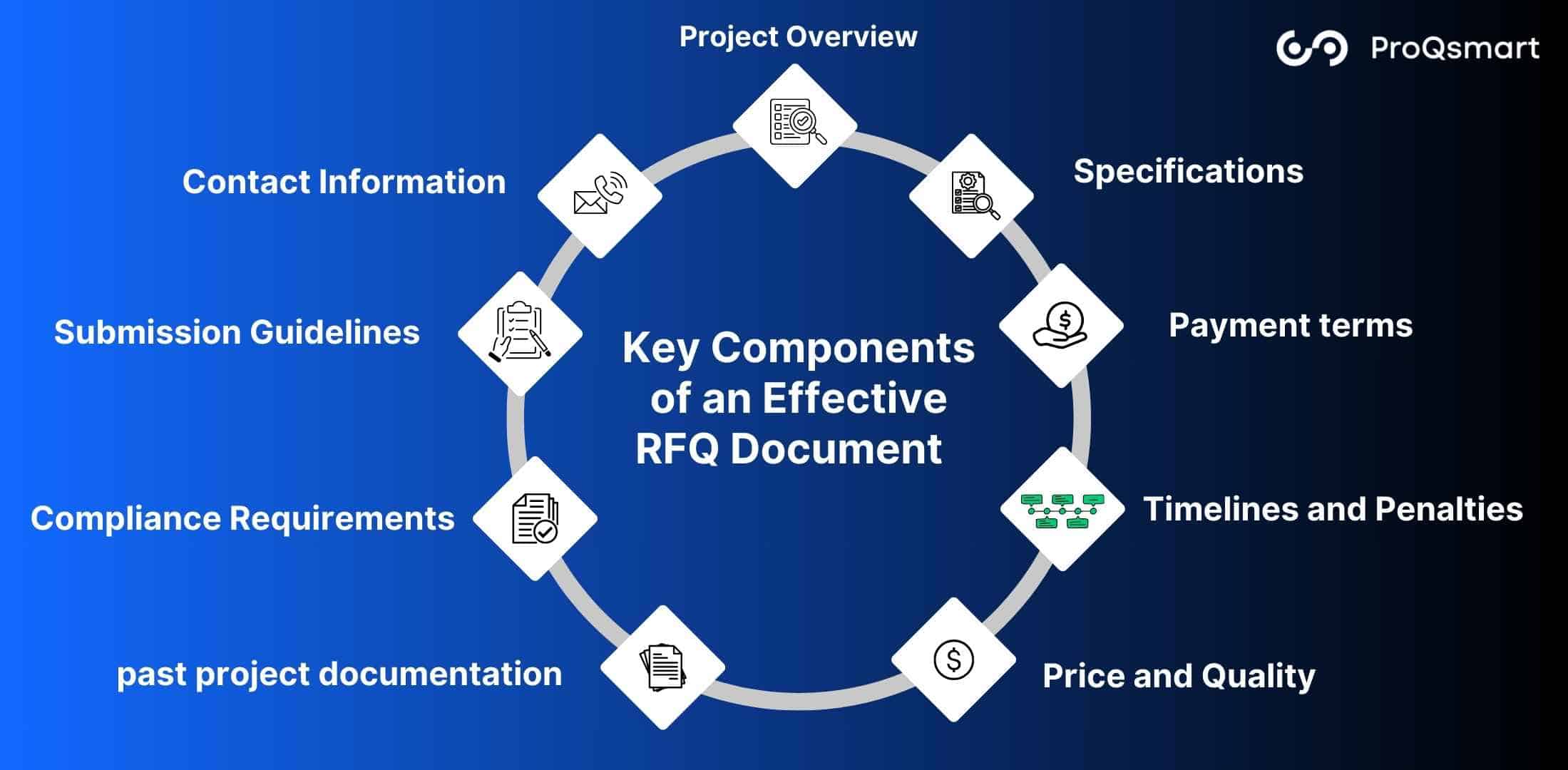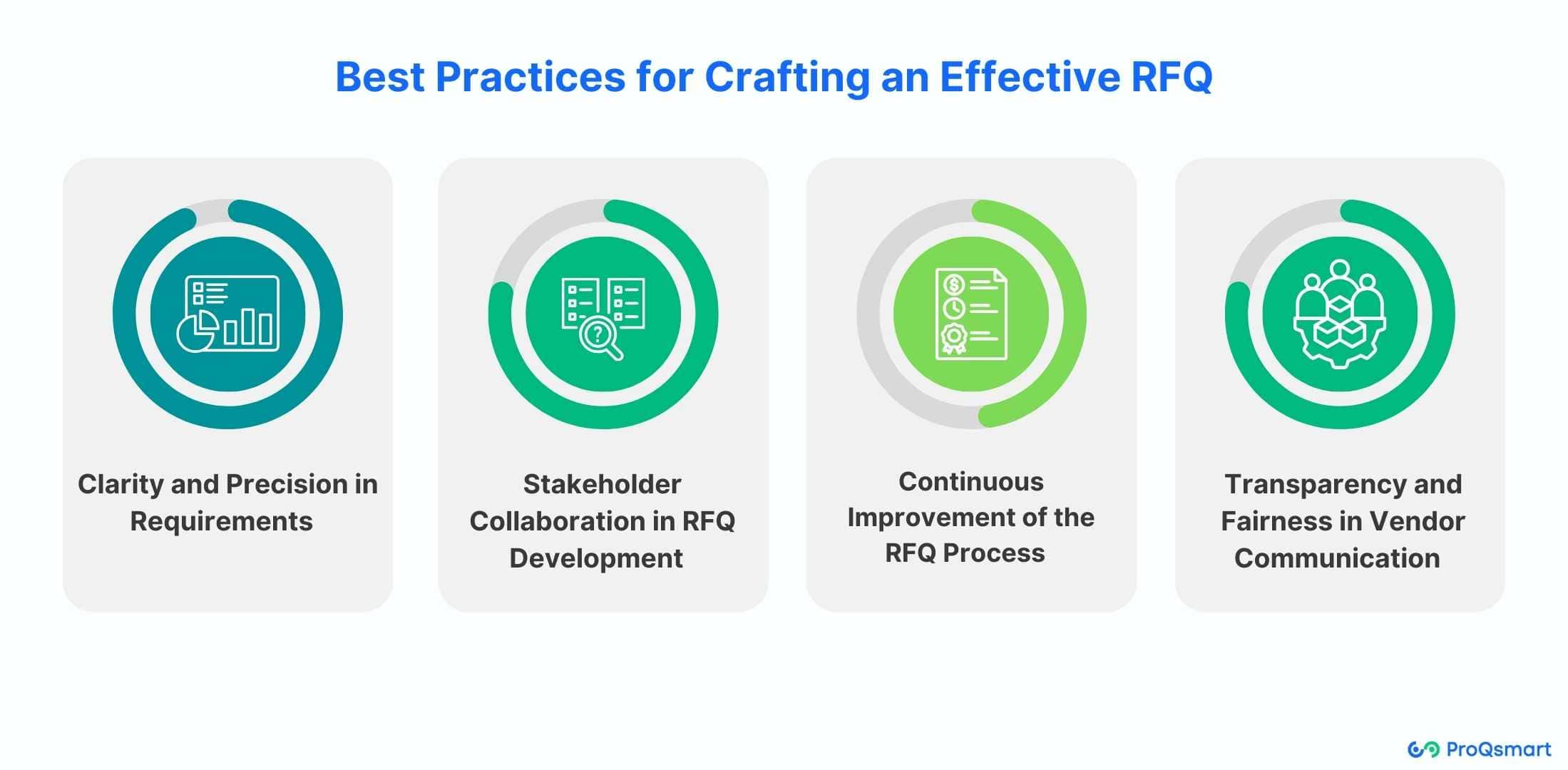RFQs are a critical step in the procurement process. They provide a precious, organized method to achieve competitive pricing and determine vendor qualifications. By honing in on these aspects, organizations can minimize costs and create more resilient, collaborative supplier relationships.
This article provides a great overview of how to use RFQs the right way to procure success. Specifically built for procurement practitioners, it provides a rich, immersive experience that gives you practical knowledge you can apply immediately to transform your procurement activities.
What is an RFQ and Why is it Critical for Modern Procurement?

An RFQ (Request for Quotation) is a cornerstone of public and private procurement, serving as a strategic tool to streamline vendor selection and drive cost efficiency. Unlike an RFP (Request for Proposal), which is designed for complex, solution-based purchases, an RFQ is ideal for transactional, price-driven procurement scenarios. Its simplicity and focus on competitive pricing make it a go-to method for one-time purchases or standardized goods and services.
RFQs empower procurement teams to make informed, data-driven decisions by inviting a select group of qualified vendors to submit quotes. This competitive process not only ensures transparency but also encourages vendors to offer their most attractive terms. By limiting the vendor pool to a manageable number—typically around eight—organizations can maintain efficiency while fostering healthy competition.
One of the key advantages of RFQs is their ability to enhance accountability and reduce bias. The formal, documented process ensures that all vendor interactions are tracked, minimizing the risk of favoritism and providing a clear audit trail. This transparency builds trust within the organization and ensures compliance with regulatory standards.
In today’s digital age, leveraging a centralized RFX management system can further optimize the RFQ process. Such systems eliminate the inefficiencies of manual, paper-based workflows, enabling faster document distribution, better vendor communication, and more accurate decision-making. By simplifying procurement, RFQs allow businesses to focus on strategic goals while maintaining cost control and operational efficiency.
The 9 Key Components of an Effective RFQ Document

Here’s a breakdown of fundamental components:
Project Overview: Clearly articulate goals, scope, and outcomes to guide vendor understanding.
Specifications: Detailed technical and quantity requirements minimize ambiguity.
Specify unit costs, discounts, and payment terms for transparency.
Pricing Structure: Clearly define timelines and penalties for not completing on time.
Evaluation Criteria: Weight factors like price and quality to align with goals.
Vendor Qualification: Acquire past project documentation and references for reliability.
Compliance Requirements: List necessary certifications and industry standards.
Submission Guidelines: State format, deadlines, and preferred submission methods.
Contact Information: Provide clear communication channels for inquiries.
"Now you don’t have to worry about drafting your RFQ! We’ve got you covered with our customizable RFQ template. Download it today and simplify your procurement process with ease!"
Clear Project Overview
Providing a detailed project overview helps to establish a good base. It serves as an introduction to the project goals and scope, making sure that any vendor who is interested understands what is needed.
Providing this type of background information ensures that vendors can tailor their proposals to help you achieve those desired outcomes, improving the bidding process.
Detailed Specifications and Requirements
Specific specifications are very important to prevent miscommunications. Providing an itemized list of technical specifications required is key to ensuring that vendor submissions meet a high level of quality and appropriateness.
Providing an itemized list of costs including services provided and optional add-ons, with total costs and possible savings, provides much more clarity.
Advanced Pricing Structure and Payment Terms
Providing details regarding pricing and payment terms helps set clear financial expectations from the outset. Including a pricing table showing various options can be helpful, and clearly outlining payment terms with discounts for early payment can encourage adherence.
The GTC document is the framework for bidding.
Delivery and Timeline Expectations
By defining delivery timelines and associated penalties in your RFP process, you are creating an incentive to comply. Specifying milestones and shipping requirements helps ensure that the project is completed on time, promoting accountability.
Sophisticated Evaluation Criteria
A bullet list of criteria, including scoring weights such as 40% for quality, establishes an objective evaluation standard. This ensures that bids are aligned with the project’s goals, enabling fair evaluations of potential vendors during the rfq process.
Vendor Qualifications and Experience
Establish clear vendor requirements, and require vendors to provide evidence of previous successful work to vet viable vendors.
Inviting vendors to highlight areas of expertise most applicable to the scope of work will always lead to a more competitive selection process.
Legal and Compliance Requirements
Outline legal obligations, certifications, and compliance with industry standards to guarantee quality and safety from vendors.
Clearly outline liability and insurance requirements to ensure protection for both parties.
Submission Guidelines
Specific and clear submission guidelines, such as the rfq format, make it easier for respondents to be precise. Providing clarity on any expected formats, deadlines, and submission methods encourages more robust vendor participation in the RFP process.
Contact Information and Q&A Process
Giving specific contact information encourages them to reach out and ask questions.
Provide a detailed approach to the question-and-answer process, including deadlines for questions to be submitted for a timely response.
How AI and Technology Are Transforming the RFQ Process
AI-Driven Tools for RFQ Automation
AI tools such as ProQsmart play a crucial role in automating RFQ generation and management, greatly minimizing manual errors. These platforms automate vendor matching using the precise requirements of each project. By saving procurement professionals time and money with this innovation, procurement professionals can focus on more strategic initiatives.
Smart features like real-time updates and RFQ tracking give all parties transparency and efficiency through the RFQ process. For instance, automated bid solicitation and bid comparison greatly simplify communications and comparison with vendors, removing the busy work. Therefore, this automation decreases the labor pool needed for day-to-day tasks, increasing efficiency and allowing increased productivity.
Predictive Analytics for Vendor Selection
AI-driven predictive analytics transforms the vendor selection process, using historical data to predict a vendor’s future performance. With data-driven decision-making, you’ll be able to ensure you select the most reliable suppliers, so you can optimize future procurement strategies.
Through a better understanding of risk factors, procurement teams can make better informed strategic decisions, reducing the chances for negative outcomes. Access to historical RFQ data and supplier performance metrics further supports accurate evaluations, with approximately 80% of RFQs focusing on price. Thus, this data-driven mindset doesn’t just improve existing practices, it equips design and engineering teams to tackle new challenges down the road.
Integration with ERP Systems
By integrating RFQ processes with ERP systems, organizations can streamline their entire procurement workflows, providing a centralized hub for all data, enabling better decision-making. Automating purchase orders based on RFQ outcomes ensures efficiency, with real-time data access empowering procurement teams.
ProQsmart’s integration capabilities with ERP systems is a good example of how seamless data flow can propel your procurement excellence journey. Thus, this all-encompassing, centralized platform provides immediate, more streamlined access to RFQ data, supplier information, and contract terms, making it easier than ever to make informed, faster procurement decisions.
How to Write an Effective RFQ: Best Practices

Clarity and Precision in Requirements
Clear and precise language in RFQ documents is important. When requirements are unclear, not only is it difficult for vendors to respond appropriately, but the project may suffer.
Providing concrete examples gives vendors a clearer understanding of what you are looking for, eliminating guesswork and vagueness. Remove all acronyms and jargon that could trip vendors up for clarity and easy understanding.
Examples, like providing guidance on Mechanical, Electrical and Plumbing scopes, help set expectations so that vendors know what space requirements are.
"Now you don’t have to worry about drafting your RFQ! We’ve got you covered with our customizable RFQ template. Download it today and simplify your procurement process with ease!"
Stakeholder Collaboration in RFQ Development
Determining who your stakeholders are in the RFQ process is crucial. Engage your procurement managers, technical experts, and end-users to develop well-rounded RFQs.
Having diverse perspectives helps to ensure stakeholder objectives are aligned with procurement goals, making for a more effective RFQ. Having continuous dialogue between all stakeholders helps to keep everyone on the same page and clear on expectations.
Continuous Improvement of the RFQ Process
Conducting regular reviews of the RFQ process help keep it streamlined. Studying the results of your previous RFQs is a good place to start when looking for improvement.
Adopting new technologies accelerate RFQ effectiveness, but training procurement teams on RFQ best practices bridges the path to progress.
Transparency and Fairness in Vendor Communication
Establishing open communication with prospective vendors is key to building trust. Having consistent messaging across platforms helps to eliminate bidder confusion.
Timely notification of submissions and equitable evaluation of bids creates a transparent atmosphere. This transparency is a critical step for the 80% of construction projects that use the RFQ process.
How to Avoid Common Mistakes in RFQ Process
Navigating the Request for Quote (RFQ) process can be tricky, and even small mistakes can lead to major headaches. These mistakes often stem from poorly-defined requirements or failing to consider vendor feedback, which is crucial for accurate vendor comparisons. Avoiding these pitfalls will significantly enhance your RFQ process, ensuring you have a comprehensive price quote that meets your business needs and helps you avoid making expensive errors yourself.
Vague Requirements and Their Consequences
Failing to define requirements in RFQs can lead to misaligned vendor proposals, wasting valuable time and resources in the procurement situation. When expectations are not clearly outlined, potential vendors often choose what they believe matches best. This explicitly lack of alignment can increase costs and extend project schedules, making the bid selection process more challenging.
It’s imperative that you write very clear, specific RFQ templates to ensure you receive the most accurate responses. Additionally, a careful review by your team can help avoid ambiguities and ensure that all bidders have access to the same buyer information, creating a level playing field.
Note that taking shortcuts by eliminating the RFI step can result in loss of information, complicating the RFQ format and making the overall process much more difficult.
Overemphasis on Price Over Quality
Prioritizing price above all else when choosing a vendor comes with dangerous liability. Although cost savings are obviously very important, it’s more important to consider price along with the company’s quality and service standards.
Considering vendor capabilities, not just pricing, significantly makes sure they’re the right fit for your project. Remember, investing in quality vendors is an investment in the future, leading to trusted partnerships and more successful projects over time.
Ignoring Vendor Feedback
Lack of consideration for vendor feedback can complicate the RFQ process. Gathering feedback from vendors can help sharpen future RFQs and foster better relationships with suppliers.
Frequent updates create an atmosphere of teamwork, confidence, and progress. Engaging with vendors improves the RFQ process and builds your network as well.
Conclusion
You have to have extreme attention to detail, very clear objectives, and a real talent for figuring out what’s going to work best for your needs. With the right RFQ, you steer cost savings, discover dependable business partners, and maximize your efficiency. It’s a whole new reality, and tech and AI put you ahead — reducing mistakes and increasing efficiency. Prevent early mistakes by following established best practices and staying laser-focused on your goals. Jump into the RFQ game with both feet and see your procurement processes flourish.
Ready to transform your RFQ process and achieve procurement excellence?





